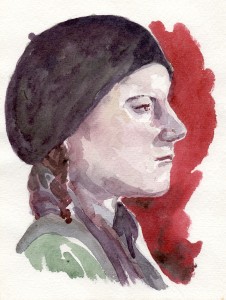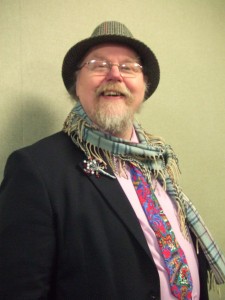Open mic night
I went to my first open mic night.
It was all kinda scary; fright or flight
So I wrote a poem
Even read it out loud.
But oh dear oh dear
now that I’m home
My brain just won’t leave
the rhyming alone.
Upgrade: leave the past behind
So my 6 year old phone decided to go on mute, permanently.
I tried various remedies, restarts, factory resets etc, but none resolved the problem.
The only way forward was an upgrade, a new phone.
So a new phone, well second hand, was acquired and the upgrade made.
But as the software transfer was complete a sneaky ‘feature’ remained. A shadow of the past!
Now the new phone showed the mute button was still on!
For me a picture and a lesson that dysfunction from the past can unwittingly imprint the future.
…and another red: brazilwood
Brazilwood:
Origin: Brazilwood dye comes from the Caesalpinia tree, and was named “brazil” even before the discovery of that country!
In the Middle Ages it was always sold in blocks, and the craftsman had to reduce the solid wood to powder by scraping it with a piece of glass, or filing or pounding, as the finer the powder the more easily the color can be extracted from it.
In its natural state, brazilwood is a light, brownish red; mahogany in appearance. Today it is sold in blocks or chips, and sometimes in scrapings or shavings (as of 1960s).
Pigment: When the brownish powder of brazilwood is wet it turns reddish. When steeped in a solution of lye it colors the liquid deep, purplish red, and hot solutions of alum extract the color from the wood in the form of an orange-red liquor.
Most medieval brazil lakes were made either from the extract made with lye (a weak solution of potassium carbonate) or from the alum extract, as these solutions get the color out of the wood more thoroughly than plain water. Just what the shade is that is extracted depends on how acid or alkaline the mixture of solutions is made. The more alum: the warmer the color, the more lye: the colder the red. The precipitate is collected by settling and pouring off the liquid. The pasty mass is smeared on an absorbent surface such as a new brick or tile to dry. Then it is ground, and has the same degree of transparency as the alumina of which it is chiefly composed. When chalk is added to the alum, a more opaque pink rose is produced by the resulting admixture of calcium sulphate to the alumina lake. When white lead was used, it had no other effect than to give substance to the lake and slightly less transparency, rather than to make it opaque. When marble dust and powdered egg shells were added to newly formed lakes, they further controlled the color produced by reacting chemically with any excess of alum which might give a brown cast instead of rose. In all these cases the brazil color was mordanted upon the white material, so to speak, dyed with the brazil, and the pigment so formed was different from a mixture of a finished lake with a white pigment.
In art: Brazil lakes are not very permanent.
Reference source: http://jcsparks.com/painted/pigment-chem.html#Brazil
Richard Of York Gave Battle In Vain: colour pigments
Let’s start with red, or should I say reds….
red, the color of blood, fire and wine….. life, danger and vitality
Alizarin crimson (Alizarin madder lake)
About: Madder lake was made from the European madder root, Rubia tinctorum. Since the 1850s (approximately) it has been made synthetically– under the name alizarin– with an identical chemical composition, but a superior clear transparent tone and lightfastness and by manipulating these chemicals, a range of shades has been made from scarlet to ruby.
Pigment: Roots of the madder plant are dried, crushed, hulled, boiled in weak acid to dissolve the dye, and fermented to hydrolyze anthraquinones from the glycosides. The extracted dye is made into a pigment by dissolving the dye in hot alum (aluminum potassium sulphate; AlK(SO4)2 · 12 H2O) solution, and precipitating pigment with soda or borax. Synthetic alizarin lakes are prepared by reaction of alizarine with aluminum hydroxide.
In art: Alizarin lake colors are permanent to light and to the gaseous atmospheres of urban areas. However, when mixed with ochre, sienna and umber, they lose their permanence, and when mixed with blacks or oxides, their permanence is not affected at all. Excellent as a glazing color over a dry surface. Alizarin madder lake is a coal-tar color, and in permanence exceeds the natural product, which in contrast ages more gracefully than the artificial.
For more information see http://jcsparks.com/painted/pigment-chem.html
Happy Christmas 2012 : the year of the portrait

I had no idea this time last year that I would be painting portraits and writing a book.
Here is a watercolour from my last portrait class. I’m learning soooooo much.
At an art exhibition in London I read a quote that said, in drawing a portrait we are actually learning more about ourselves. So yes I’m learning more about myself too:)
And the book….chapters are unfolding, words and pictures!
Emerging portrait: keeping on even when you want to give up
Today’s portrait lesson. Was going to trash my drawing part way through the class as I was really unhappy with it (especially the nose!) and the tutor said that the ‘history’ of learning in the picture could be used to inform it, if I corrected and re-referenced the relationships in all the tools used to create a drawing – shape, negative shape, direction and proportion, anatomy, tone etc etc. A struggle, but pleased that I hung on in there and took photos of the process 🙂
REST : a Friday afternoon inspiration
Each letter of the word REST is also the first letter of 4 other words – an acrostic.
The inspiration for this was on a busy Friday afternoon, when I worked in a hectic PR office.
I was stressed out. Not just on that Friday, but I had been stressed out for a while.
At that time in my life people had been telling me to ‘REST in the Lord”. Which is Christianese for ‘chill out and trust God’. But I didn’t get it.
I had searched the Bible for the word REST and seen how in the pre-Jesus part of the Bible, Moses, who’d had more than his fair share of stress, had entered God’s rest. And this didn’t mean that he’d died, it was a state that he had been living in while trekking around with thousands of grumbling people in the dessert.
Then there was a whole bit in the New Testament, the Jesus part of the Bible, about not missing out on entering God’s rest.
Anyway that Friday afternoon, I was busy trying to finish work for the weekend, but I needed to take a toilet break, which is very inconvenient when you are busy.
However…eureka…the little room, away from the computer and the phone, was a place of quiet revelation. (I’ll add here that my visit was no longer than a brief pause, no time for reading!)
Anyway I’d got it.
REST was all about Relying on God.
Not a bit, not some of the time, but Entirely.
It should not be striving, but a complete Stop from self-reliance and constant Trying.
YAY – REST!
Then eureka part 2 came this summer, and I hasten to add I was not in the bathroom at the time!
I was reading and learned that the Hebrew word Shabbat, from which we get the word Sabbath actually means to CEASE or STOP.
In the beginning Genesis story in the Bible, it says that after creating everything God rested: he stopped working and ceased from labouring.
In the Moses story a bit later in that same Bible book, God sets up Shabbat, a rest for people….the weekend!
But RESTing in God goes beyond having a day off each week. It’s a state of constancy.
It’s not about kicking back and doing nothing, rather it’s about doing everything from a place of relationship with God the creator, so that you Rely Entirely on Him and Stop Trying to make everything alright on your own.
Happy Christmas
Sometimes I make a little film at Christmas, a summary of the year. It’s kind of a therapy thing. Haven’t done that yet, but here’s a Christmas illustration for you and if you want to see a snippet of my year, then whiz to skip to 37mins and 37 seconds for my MA graduation on 11/11/11 at you’ve guessed it around 11.11 am. What a year.
Group 5 presents
Putting the presentation together has been another hurdle. There are still slight traces of the concept content dichotomy.
Today we arrived to make our rehearsed presentation to the group. For me we had finally become a dynamic team. Everyone had the same aims and goals for the day and without conferring had all worn the same colour clothes. Spooky!
Transmedia storytelling is knowing your message, knowing your audience, knowing your media methods and knowing how to work all of these things together.
To bring the concept www.theartcircles.com alive further and make the experience immersive for our audience I even arranged a surprise guest appearance by our art critic.
Presentation, presentation, presentation
The story has won the day. Even if it didn’t get first billing in the production, it definitely gets its ranking in first place in the production folder. The treatment, description and summary all hold the keys to the concept. The content takes its place next, beautifully produced artifacts. The Arts Circles is a class concept and skillfully produced with all the talents of the team.
Everyone has pulled out all the stops to get the final nips and tucks made. See the results:
The documercial
An example of one of the featured artists
And an example of one of the featured interviews








